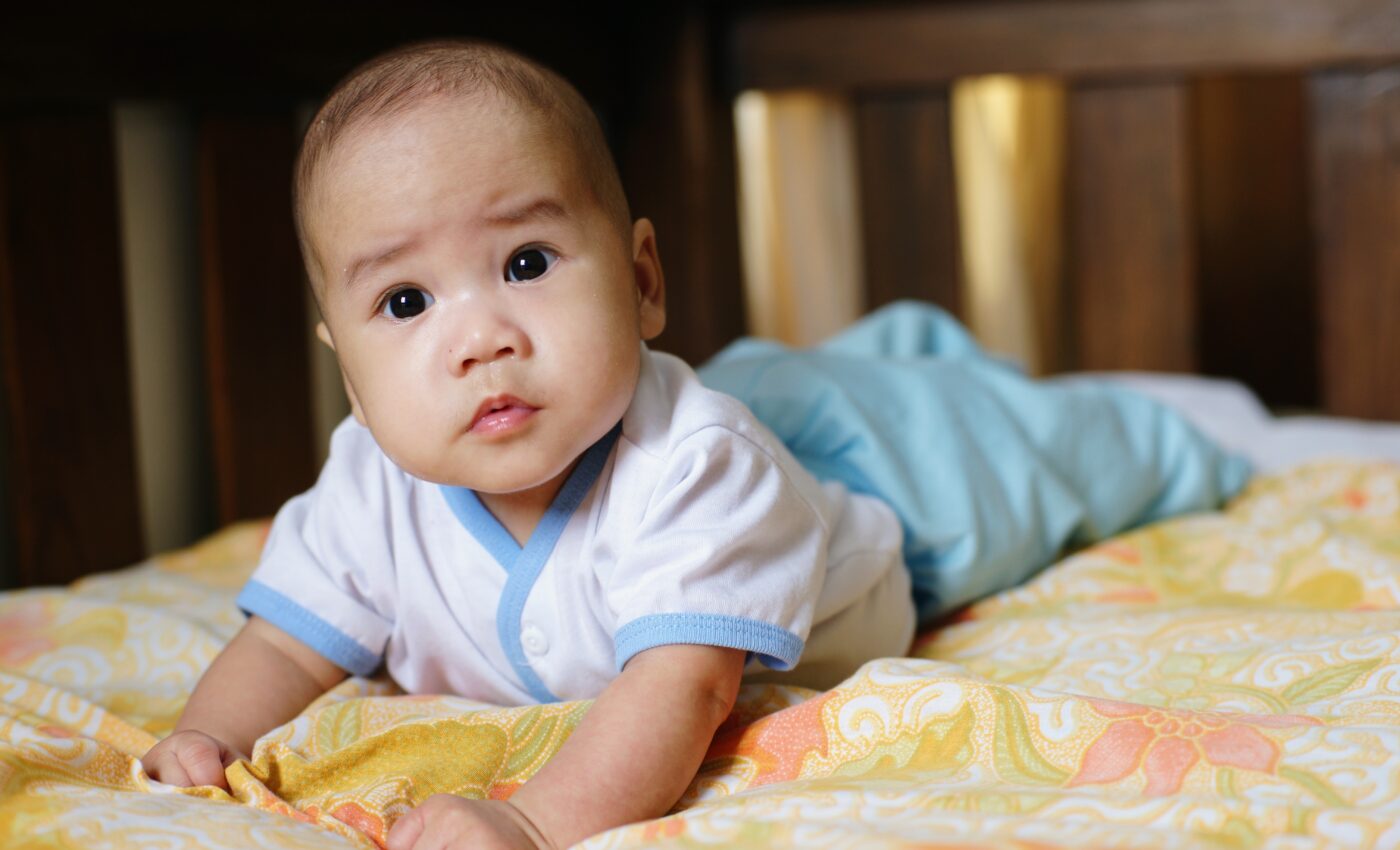
Four-month-old babies show signs of self-awareness
Babies as young as four months old exhibit signs of self-awareness, according to an innovative study from the University of Birmingham.
The research reveals new details about how infants interact with the space around them and develop self-awareness.
Focus of the study
The study was carried out in the Birmingham BabyLab, where experts presented babies with a visual stimulus: a ball on a screen moving towards or away from them.
When the ball appeared closest on the screen, a small vibration was given to the babies’ hands, simulating a “touch,” while their brain activity was closely monitored. This critical data collection took place at Goldsmiths, University of London.
Peripersonal space
“Our findings indicate that even in the first few months of life, before babies have even learned to reach for objects, the multisensory brain is wired up to make links between what babies see and what they feel. This means they can sense the space around them and understand how their bodies interact with that space. This is sometimes referred to as peripersonal space,” explained lead researcher Dr. Giulia Orioli.
“Of course, humans do this all the time as adults, using our combined senses to perceive where we are in space and making predictions about when we will touch an object or not. But now that we know that babies in the early stages of their development begin to show signs of this, it opens up questions about how much of these abilities are learnt, or innate.”
Development of self-awareness
From just four months old, infants demonstrated enhanced somatosensory (tactile) brain activity when they experienced a touch following an object moving towards them.
This discovery is pivotal in understanding how self-awareness develops from an early age.
Unexpected touch
The researchers also explored how an unexpected touch influenced older infants in the study. They observed that eight-month-old babies showed signs of surprise in their brain activity when the touch on their hand was preceded by the ball moving away from them on the screen.
“Seeing the older babies show surprise responses suggests that they had not expected the touch due to the visual direction the object was moving in,” said study co-author Professor Andrew Bremner.
“This indicates that as babies proceed through their first year of life, their brains construct a more sophisticated awareness of how their body exists in the space around them.”
Future research
The team plans to expand their research to include both younger and older participants. This may provide a more comprehensive understanding of the developmental trajectory of multisensory abilities.
The researchers are particularly interested in examining the brain activity of adults in similar scenarios. By doing so, they hope to gain insights into the mature forms of brain activity that infants are gradually developing towards.
The team also plans to explore the presence of these multisensory abilities in newborn babies.
“It is a challenge working with newborns, as they spend such a large portion of their time sleeping and eating, but we are starting to have some success working with this age group, and it is going to be fascinating to see if babies only a few days old have the foundations of a sense of their bodies in space. If so, it could be that we are looking at the origins of human consciousness,” said Dr. Orioli.
More about self-awareness
Self-awareness is a key aspect of human consciousness that is complex and multifaceted. It is typically understood as the conscious recognition of oneself as an individual, separate and distinct from the environment and others.
Physical identity
At its core, self-awareness is about understanding one’s own existence and identity. It’s what allows individuals to recognize themselves in a mirror or in photographs, which is a milestone often observed in human development during the toddler years.
Internal states
Beyond physical recognition, self-awareness encompasses an understanding of one’s internal states, such as emotions and thoughts, and how these can differ from those of others.
Adulthood
As people grow and develop, self-awareness becomes more complicated. It evolves from basic recognition of the self to include deeper understanding of one’s own mental and emotional states.
For instance, adults not only recognize that they are feeling sad, but they can also ponder why they feel that way and how it affects their behavior and decisions.
Origins
In the context of psychology and neuroscience, self-awareness is often studied to understand its origins, how it develops, and its role in social and cognitive functions. There’s a particular interest in understanding at what stage of development self-awareness begins to emerge and how it progresses.
Animals
Self-awareness is not just limited to the human species. Some animals, particularly certain primates and some birds, have shown signs of self-recognition, suggesting that this ability might be more widespread in the animal kingdom than previously thought.
The study is published in the journal Scientific Reports.
Like what you read? Subscribe to our newsletter for engaging articles, exclusive content, and the latest updates.
—-
Check us out on EarthSnap, a free app brought to you by Eric Ralls and Earth.com.













